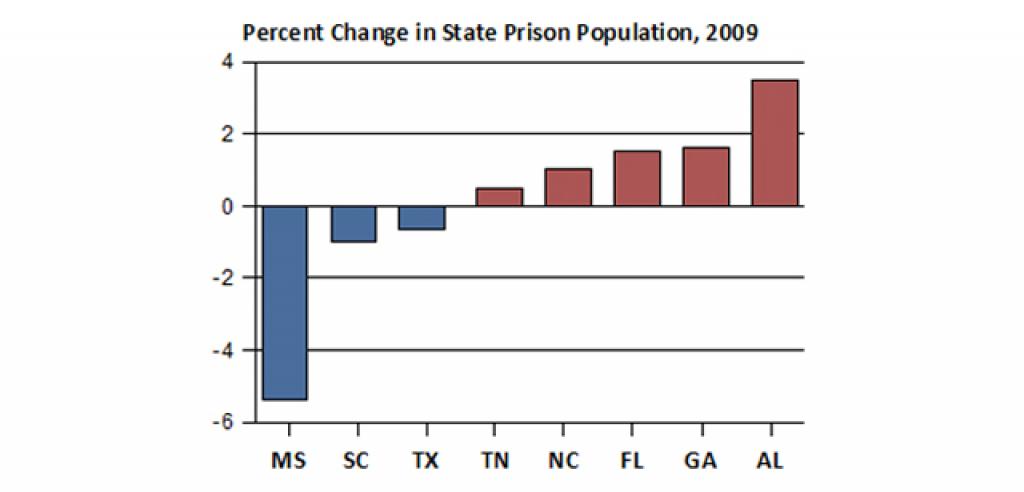In 2009, Alabama increased its prison population to over 31,000 people. That same period saw the state prison population nationwide decline for the first time in nearly 28 years as states implemented new technology and parole reforms to reduce reliance on incarceration in the face of crippling costs.
Alabama’s prison population expanded in 2009 by 3.5%, to 31,561. Hundreds of people are incarcerated in Alabama prisons for minor, nonviolent crimes like writing a bad check and simple possession of marijuana.
The Alabama Department of Corrections reports that 34% of the nearly 12,000 people entering the state’s prisons in 2008 are drug offenders. Alabama Chief Justice Sue Bell Cobb called on Alabama prosecutors to send these nonviolent offenders to drug courts instead of prison. Investing in treatment and diversion programs paid off in a big way for Texas, which saved nearly $2 billion in new prison construction and operations costs.
Across the country, according to the Public Safety Performance Project of the Pew Center on the States, the number of state prisoners declined by nearly 6000 people in 2009. Twenty-seven states reduced their number of inmates by adopting policies to “effectively reduce their prison populations, and save public funds, without sacrificing public safety.”
States succeeded in reducing inmate populations in part by ending the practice of returning low-risk parolees to prison for technical parole violations. Re-incarcerating people who have committed no new crime costs Alabama taxpayers millions of dollars each year.
A bill to limit re-incarceration for technical violations has been proposed and is pending in the Alabama Legislature.
Corrections costs have quadrupled in the past 20 years and today account for 1 of every 15 state general fund discretionary dollars. Alabama officials, facing severe overcrowding and budget shortfalls, want judges and prosecutors to actually use sentencing reforms adopted several years ago to help bring down the prison population.
The Pew report found that, together with financial pressures, advances in supervision technology, such as GPS monitors, new treatment strategies that successfully reduce recidivism rates, and increases in public support for community corrections are working in many states to promote sentencing and parole reform and protect public safety.
